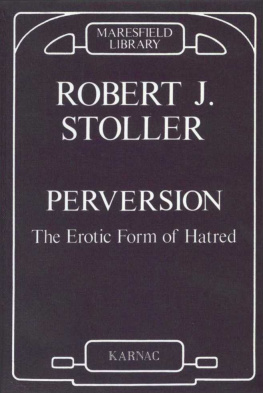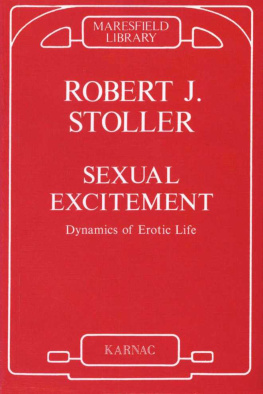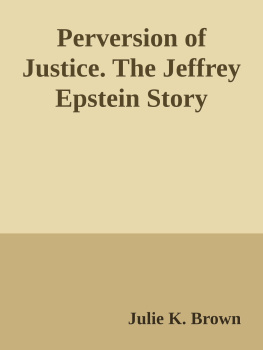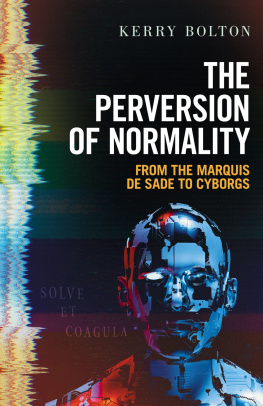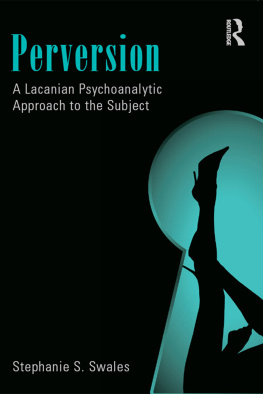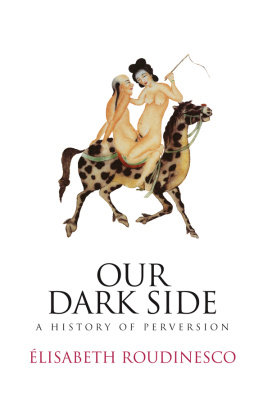PERVERSION
The Erotic Form of Hatred
Robert J. Stoller, M.D.
Professor of Psychiatry,
Department of Psychiatry,
School of Medicine
University of California at Los Angeles
MARESFIELD LIBRARY
LONDON
KARNAC BOOKS
First published in 1975
Reprinted 1986 with permission of Pantheon Books,
Karnac Books Ltd.
118 Finchley Road London NW3 5HT
1986
ISBN 978 0 94643 920 1
Printed in Great Britain by BPC Wheatons Ltd, Exeter
Contents
Acknowledgments
I want to thank Nathan Leites, Ph.D., whose concern for clear and precise language again served as a conscience I could only sometimes evade, and my secretary, Thelma Guffan, whose patience and skill continues to ease the effort of writing.
Robert J. Stoller, M.D., is a psychoanalyst and Professor of Psychiatry at the University of California at Los Angeles School of Medicine, where he teaches medical students and psychiatric residents. He is a member of the American Psychoanalytic Association and received his training at the Los Angeles Psychoanalytic Institute. Professor Stoller is the author of numerous papers on the development of gender identity. He has previously published three books on the subject, Sex and Gender: On the Development of Masculinity and Femininity (1968), Splitting (1973) and Sex and Gender Volume II: The Transsexual Experiment (1975). In addition to his research in gender identity, Professor Stoller has a continuing interest and involvement in research in medical education.
Introduction
Why in this enlightened day would one choose to entitle a work perversion, a term that is becoming pass? The great research published in the last decade or two has taught us that aberrant sexual behavior is found in other species, is ubiquitous in man, and is the product of brain and hormonal factors that can function independently of anything we might call psyche. Then too, their findings make researchers regret societys moral stance that sexual aberration is unnaturalsinfuland the repressive social action that follows. Thus, in ridding ourselves of the concept of perversion, we have the tempting combination of good research serving a humane cause. Yet it is my contention, explored in the body of this book, that perversion exists.
The connotations of the word are unpleasant and have a flavor of morality and therefore of free will that is antiquated in these days of science and determinism. It is to avoid just such connotations that the softer terms variant, deviation, or aberration are used. More and more these days, decent peoplemany of them scientistsare concerned about the price their fellows, and even more, whole societies, pay in the effort to suppress victimless aberrant sexual behavior. And so, in the name of decency, it has become the style, using the trappings of Science, to try to get rid of the concept of perversion. This is done not only by changing the term to ones with less severe implications but by trying to show that there are no (or very few) states that actually fit the nasty connotations of perversion. These workers reach their conclusions by objective means that they feel avoid the dangers of introspective material, such as by studying brain mechanisms in animal and man, which reveal capacities for aberrant behavior inherited and laid down in hormonal organizations of the central nervous system; by statistics that unmask how widespread are these allegedly heinous acts; by anthropological studies that show aberrant sexual behavior to have been the usualnot the exceptionalthroughout history and across cultures; and by observation of or experimentation on intact animals. In all these cases, data have been gathered disclosing that aberrant sexual practices are found throughout animal species and are ubiquitous in human behavior. It is easy, then, to conclude that the widespread aberrance in man does not really signify willed behaviorthat is, sinfulness, disobedience to accepted moralitybut rather a natural tendency of the sexual impulse in the animal kingdom.
Conversely, othersphilosophers and essayists rather than formal researcherswho serve a different but also admirable decency try to call us back from the abyss of licentiousness, pointing up the dehumanized, unloving aspects of sexual behavior that emphasizes anatomical more than interpersonal gratification. To need to reduce another person to a breast or a penis or a bit of cloth before one can succeed in concentrating ones lust is very sadand dangerous; such severe failure of potency and degradation of lovingness only augment the other processes that today disintegrate ones humanity.
The first group of workers wants to be rid of the concept of perversion because it has moral connotations that have no place in the scientific study of behavior and because the term can be used by the repressive forces in society. The other group wants perversion retained because we need a sin-laden word to preserve the old morality, which, tested for so long, gives structure to society.
There is some truth in each posture. But both are wrong.
The purpose behind this book is not to describe and discuss the perversions and not to offer a comprehensive theory of the origins and dynamics of perversion, but rather to find the meaning of perversion, to define the term clinically so that one can recognize the common factor when it appears, regardless of the specific behaviors that make one perversion different from another. To do this, I shall look primarily at hostility, which I find the defining factor.
First, perversion is the result of an essential interplay between hostility and sexual desire, hostility that is manifest in the connotations of the term. (The dictionary, in dealing with perverse, perversion, and to pervert, uses words like corrupt, wicked, incorrect, improper, stubborn, obstinate, wrongheaded; to misdirect, make use of willfully in a wrong or improper manner, misuse, misinterpret, misconstrue, misapply, debase [Webster, 1961].) Second, people with perversions feel (are made to feel) an unending sense of being dirty, sinful, secretive, abnormal, and a threat to those finer, unperverse citizens who are supposed to make up the majority of society. Third, the word itself reflects the need of individuals in society to keep from recognizing their own perverse tendencies by providing scapegoats who liberate the rest of us in that they serve as the objects of our own unacceptable and projected perverse tendencies. All that unsavory sense of sin is lost in the blandness of a term like variant, with its conspicuous yearning for respectability and statistical cleanliness. (While I can stomach the term perversion, however, the vicious implications of calling someone a pervert make me almost unable to use that word.)
This book is the fourth in a series on the subject of the development of masculinity and femininity. When that work began in 1958, I did not expect it to lead to a study on the meaning of sexual aberrations. But I have recently found myself believing that perversion arises as a way of coping with threats to ones gender identity, that is, one's sense of masculinity and femininity, for that is the case in the patients I treat. Now and in coming years the task is to see if the hypothesis that perversions are usually disorders of masculinity and femininity is generally true and not just a coincidental finding in the few patients I have studied. In these introductory remarks, I also wish to underline that thinking in terms of masculinity and femininity gives a different (though not contradictory) perspective from that of classical psychoanalytic metapsychology with its neuter colorationego, id, superego, neutralization, cathexis, and so forth.
A few words about my writing style are in order here at the start. The reader will soon see that although the hypotheses are drawn from clinical material, the generalizations are often stated as if they were not still to be proved and as if I had studied enough cases to permit positive statements. But if, as you read, you bear in mind that these ideas are tentative, we can be spared the excessive use of it seems and perhaps. Treat the book as an argument to be considered, worked against, and tested.

